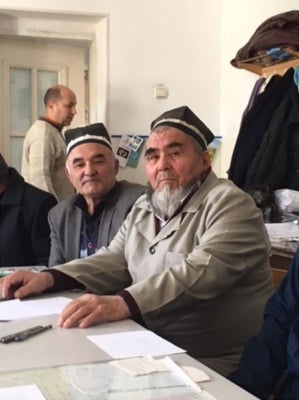Tajikistan, a low-income country in Central Asia, has seen a gradual increase in life expectancy over the past two decades, along with decreases in maternal and child deaths. Yet, overall health outcomes remain poor, with chronic diseases emerging as a major cause of disability and death among the population.
Hypertension, a risk factor for chronic diseases, is now the third highest cause of premature death and disability in Tajikistan, and its prevalence continues to rise. By 2017, ischemic heart disease had become the leading cause of premature death in the country.
The health implications of hypertension and cardiovascular diseases are significant for the population, but there are also economic consequences for society and for households. Chronic diseases reduce the productivity of the workforce through early deaths, time spent seeking health care, disability, and lower levels of output. Through long-term needs for medication and other care, chronic diseases increase household spending and the risk of falling into poverty.
Fortunately, hypertension can be managed and controlled, which significantly reduces a person’s risk for heart attack and stroke. As much as 80 percent of cardiovascular diseases can be prevented by tackling major risk factors such as hypertension. Effective health service delivery plays a key role here, by facilitating early detection and diagnosis of high blood pressure, initiation and maintenance of therapy, and attainment of disease control.
Since 2013, Tajikistan’s Ministry of Health and Social Protection has partnered with the World Bank, through the Tajikistan Health Services Improvement Project, to improve the coverage and quality of basic health services, especially hypertension care.
In Sughd and Khatlon regions, were the project focuses, some important progress has been achieved. More health workers are providing services in line with evidence-based clinical protocols, for which they are rewarded. In addition, they are being encouraged to engage in ongoing discussions to identify service delivery challenges and solve them at the local level. Health workers now also have guides that take them step-by-step through the diagnosis of hypertension and its complications.
Nevertheless, challenges remain with regard to diagnosing hypertension. A nationwide Demographic and Health Survey conducted in 2017 revealed that, for every 100 adult females aged between 15 and 49 years with hypertension, only 17 were aware of their diagnosis and actively managed their blood pressure, while 60 remained unaware of their hypertensive status.
In Sughd and Khatlon regions, for every 100 adult females aged between 15 and 49 years who were aware of their diagnosis, less than 30 had attained blood pressure control. As many as one in three adults in each region has hypertension, yet less than 10% have been diagnosed and registered in a healthcare facility.
Many people are simply not aware of hypertension or the services available to treat it. A health administrator in Khatlon region told us, “Patients do not come for screening themselves because they don’t know the risks and negative consequences of hypertension.”
People also face financial costs that discourage them from seeking or continuing treatment. “I have spent about 10%, if not more, of the family budget for my medication every month. Every time I don’t feel comfortable,” said a male hypertension patient in Sughd region.
To help address these challenges, Tajikistan’s Ministry of Health and Social Protection, in partnership with the World Bank, undertook a study on the bottlenecks to hypertension service delivery, as well as the potential solutions. A recently-published report, which summarizes the findings of the study, confirms that there are significant gaps in diagnosis and control of hypertension in Tajikistan.
Several of the challenges identified could be addressed by changes in provider behavior, including how healthcare facilities engage with patients. It should be noted, however, that certain issues are beyond the control of healthcare facilities, such as the cost of medicines and tests, as well as an undersupply of skilled health workers – which underscores the need for additional healthcare investments in Tajikistan.
Other potential solutions include locally-implemented approaches, such as adapting the Chaikhana tea meeting for health promotion, as well as scaling-up the use of mobile health caravans to transport health workers and supplies to rural and remote areas. Better access to medication is crucial to improving hypertension care.
Want to know more? Read the full report.






Join the Conversation